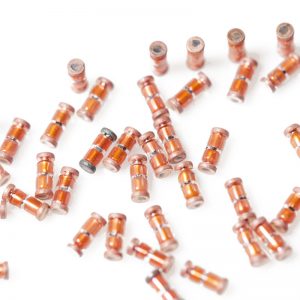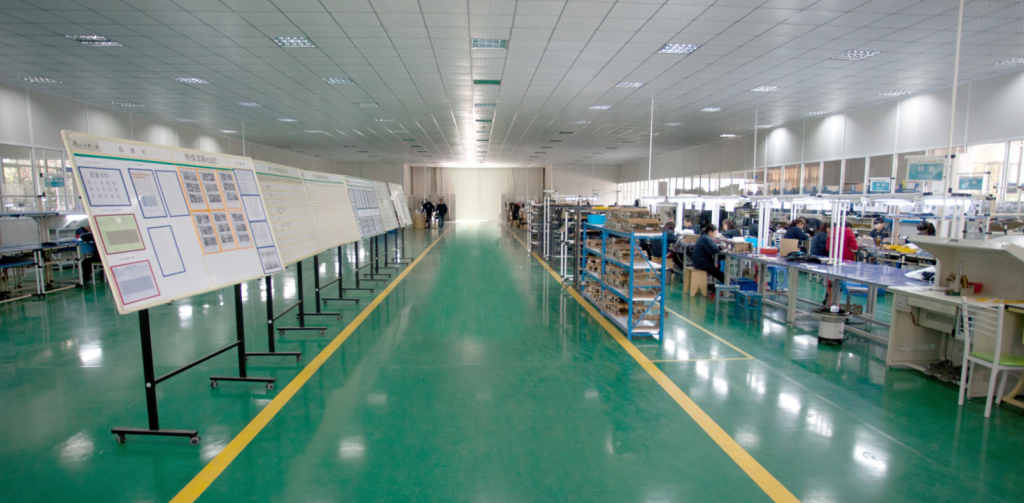一.One NTC thermistor selection points
When using NTC thermistor to collect the temperature in the lithium power battery module, the factors that should be considered when selecting the NTC thermistor are:
01 shell
The shell of NTC thermistor should be smooth and clean, with uniform color, no cracks, no deformation, and no serious scratches. The color of each batch of products (including lead wires) should be consistent without any corrosion. There should be a permanent model and serial number on the shell surface of each NTC thermistor.
02 temperature range
Choose NTC thermistors with different materials according to the working temperature range of the application. NTC thermistors are generally composed of temperature sensing heads (metal shells or plastic shells), wires, terminals, connectors, epoxy resin or other filling materials. When selecting, NTC thermistors of different materials should be selected according to different working environment temperatures.
03 Accuracy (the entire measurement error is within ±2°C)
The NTC thermistor has good linearity in the entire temperature detection range, and the characteristics of the NTC thermistor conform to the entire parameter range. It is also necessary to consider the influence of the resistance accuracy of the NTC thermistor on the temperature detection accuracy; the influence of the B constant accuracy of the NTC thermistor on the temperature detection accuracy; the influence of the thermal diffusion constant C of the NTC thermistor on the temperature detection accuracy.
Accuracy NTC thermistor is an important performance index, which is an important link related to the measurement accuracy of the entire measurement system. The higher the accuracy of the NTC thermistor, the more expensive it is. Therefore, the accuracy of the NTC thermistor only needs to meet the accuracy requirements of the entire measurement system. Factors that determine the accuracy of an NTC thermistor are:
① The error of the NTC thermistor itself. The smaller the resistance error and B value error of the NTC thermistor, the higher the measurement accuracy.
②The contact method between the temperature sensing head of the NTC thermistor and the temperature measurement object. The measurement accuracy of direct contact is higher than that of indirect contact, and because the RT curve of NTC thermistor is nonlinear, it is impossible to guarantee the same accuracy in a wide operating temperature range. Therefore, in order to obtain higher measurement accuracy, select the central working temperature point of the workplace (generally, the central working temperature point has the highest accuracy, and according to the discreteness of the RT curve, the farther the temperature point from the central working temperature point, the accuracy error will gradually increase. increase).
04 Response speed
During the measurement process, the response speed of the NTC thermistor is fast, and the time to reach the closest temperature should be as short as possible, not exceeding 10 seconds, otherwise it will not meet the efficiency requirements in practicability. Different applications require different response speeds of NTC thermistors, and different materials have different thermal conductivity. Factors that affect the response speed of NTC thermistors are:
①The thermal time constant of the NTC thermistor chip. The thermal time constant is small and the response speed is fast.
②The thermal conductivity of the shell material of the NTC thermistor temperature sensing head, the material with high thermal conductivity has excellent thermal conductivity.
③The size of the temperature sensing head of the NTC thermistor. If the temperature sensing head is small, the heat conduction time will be correspondingly shorter and the reaction speed will be faster.
④The thermal conductive glue filled inside the NTC thermistor temperature sensing head, the temperature sensing head filled with thermal conductive silicone grease with high thermal conductivity will react faster than the thermal conductive silicone grease with low thermal conductivity without filling.
05 Self-heating
Self-heating is within a certain range, and the selection of the resistance needs to consider its own heating, so as not to cause heating itself. Otherwise, the heating of the NTC thermistor itself will affect the temperature measurement, and it should have high reliability (superior cold and heat shock performance), and the thermal time constant should be small (fast response).
06 Stability
The ability of an NTC thermistor to keep its performance unchanged after a period of use is called stability. Factors affecting the long-term stability of NTC thermistor include the stability and reliability of the NTC thermistor chip, the sensor itself and its structure, and the environment in which the NTC thermistor is used. To make the NTC thermistor have good stability, the NTC thermistor must have strong environmental adaptability. NTC thermistor stability selection factors are:
① Choose a highly reliable NTC thermistor.
②Select NTC thermistor with reasonable structure and strong mechanical strength.
③ It is reasonable to choose different filling materials for different use environments.
07 Lifespan
Lifespan: not less than 6 years, including 2 years storage period.
08 Impact resistance
The NTC temperature sensor is impacted three times in the environment of -55℃~70℃, and there should be no mechanical damage and any loose phenomenon.
09 Insulation resistance
Insulation resistance: greater than 10MΩ/500V.
二.Two NTC thermistor placement
As the software of the power battery management system becomes more and more perfect, high requirements are put forward for obtaining the real temperature of the power battery cell, not only to detect the temperature of the power battery cell, but also to detect the temperature of the power battery module, power battery The ambient temperature of the system. Under different ambient temperatures, the temperature is a core parameter for the estimation of the protection, capacity and cruising range of the power battery module.
The power battery module is composed of multiple cells. During normal operation, the temperature of the power battery module cells is uniform. However, when the power battery module is abnormal, the temperature of different power battery module cells will vary. A large temperature difference occurs. Usually, 3 to 4 collection points are selected to monitor the temperature of the entire power battery module. After the collected temperature data is input into the power battery module management unit, the power battery module management unit calculates the temperature of the entire power battery module management unit.




















